At three months old you’re baby is entering a great developmental period, where the brain is forming an inordinate amount of connections! The right toys entertain, but they can also serve as valuable tools in cognitive, motion and sensory development. This guide is all about developmentally appropriate, budget items for toys for 3 month old babies so that those all-important early learning opportunities are put to good use without bombarding the baby (or your bank balance)!
Your 3 Month Old Baby’s Development & Milestones
What Your Child’s Brain Is Doing During This Time
By about 3 months your baby is starting to be more wakeful and curious about the world around him. His vision is getting better and he’s able to follow things with his eyes. He can now see faces and is finding his hands and hands-eye coordination. Billions of neural pathways are being constructed around information the senses are taking in, what college students are doing as they get educated for the next 14 years.
Early experiences, he says, literally “build the brain.” Dittrich McKee, a pediatric neurologist. What are the best toys for 3 month old? At the very least, they will help keep your baby’s :
- By the presentation of high-contrast patterns, visual processing systems are provided by these patterns.
- Auditory systems through soft voices and music,
- tactile systems with different textures and
- Fine motor skills with opportunities to pick up.
The Value of Low-Tech Toys
When we have babies and we look at the sea of toys on the market, we’re thinking about what will entertain and engage our child. Not only are babies being sold electric toys, ones that are jam-packed with loud noises and flashing lights and space age, high-tech, electronic toys. The American Academy of Pediatrics has released evidence-based research, stating that babies and toddlers learn, discover and play more creatively with simple toys, like :
- Active versus passive
- Multi-sensory
- Parent-child interaction
- Imagination’s play bedrock
The Best Developmental Toys for 3-Month-Olds
High-Contrast Visual Stimulation Toys
Your 3 month old baby is still developing eyesight but in the meantime high-contrast patterns are stimulating. Black and white and red patterns have the most contrast, and will be much easier for your baby to see.
- Black and white board books ($5 – $10) – Have it about 8 – 12 inches from your baby during tummy time.
- High-contrast flash cards ($8 – $15) – Can alternate weekly to keep baby interested.
- High-contrast fabric patterns ($10 — $20) — Look for sets with lots of visual stimulation (in addition to different textures for baby to touch). Baby joy tips: Create your own high-contrast visual toys by drawing bold patterns with marker on cardboard. Leverage these products and the materials you’ve purchased and alternate them on a weekly basis.
Baby joy tips : Make your own visual high-contrast toys by drawing bold patterns with marker on cardboard. Use these homemade visuals in combination with your purchased visuals and change them weekly.
Sensory-Rich Tactile Toys
At this age the sensory system and the brain are also developing quite a lot, touch is becoming quite integral to the brain just because of it being outside of the uterus.
Affordable options include :
- DIFFERENT TEXTURED CLOTH BLOCKS ($10-15)
- Crinkle toys with sounds similar to that of crinkly paper when they are touched ($5-12)
- Silicone Tithers With Different Textures ($8-15) – While teething generally doesn’t start until later on, textured tithers can serve as a tactile stimulation
Expert insight : Studies indicate that diverse touch experiences reinforce neural pathways associated with sensory processing and discrimination.
The first Sounds and Music toys for your baby…
The first months of life play a crucial role in the auditory development, while the infants get to know that sounds differ.
Abbreviate and Use It Here are some simple, in many cases inexpensive, alternatives :
- Rattle ($5-10) : Choose a rattle that creates soft sounds, that is easy for an infant to hold.
- Infant maracas ($8-12)
- Musical toys with parent volume control ($.15-25)
Baby joy tips : Rotate sound toys to prevent overstimulating the baby and keep the novelty skill of your sound toys. By playing music for your babies while reading a storybook or an album, you demonstrate what kind of music to expect and what you want them to expect when you perform music yourself!
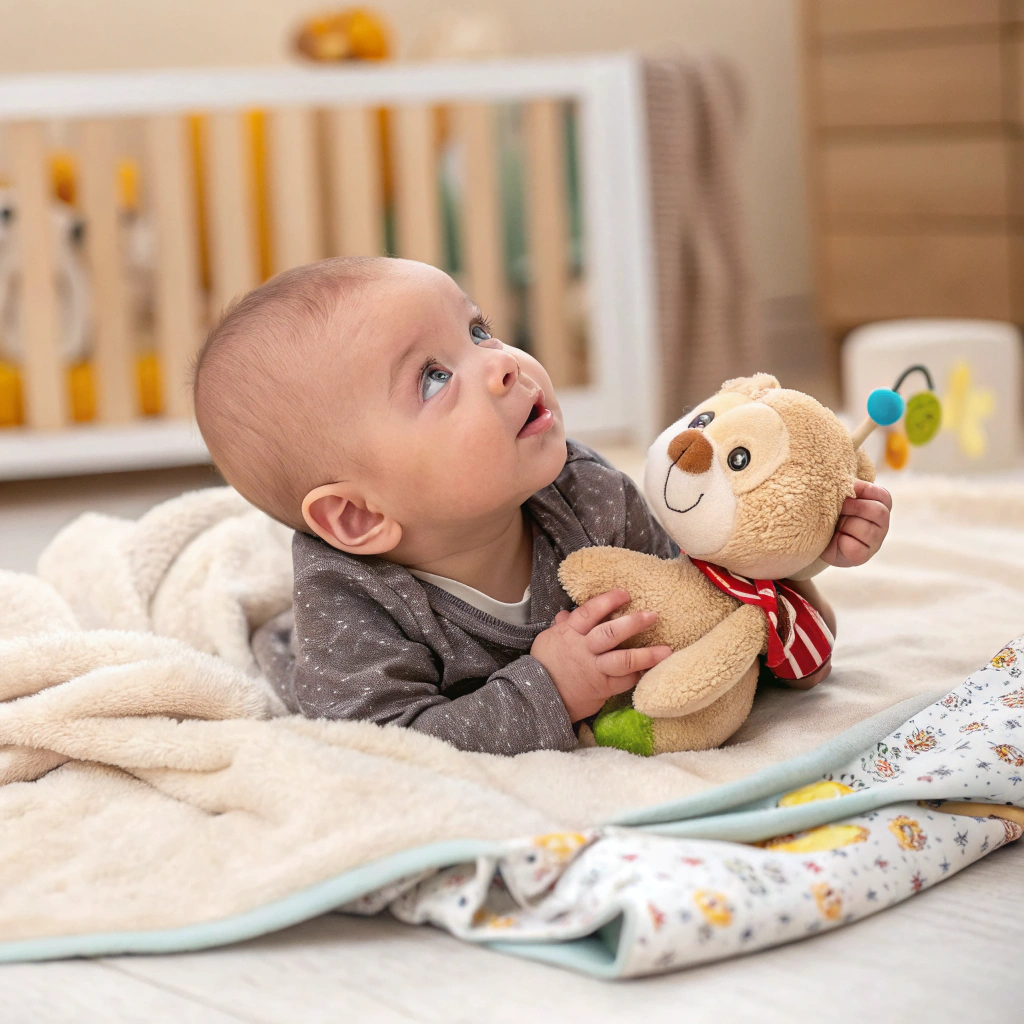
Developing a Budgeted Collection of Toys for Development
Toys That Are Designed to Do More.
Invest in some thoughtful toys they can use well beyond the three-month line.
- Play gyms with removable toys (30-60) – the toys can be detached for standalone play later, and often can be used anyway.
- Soft Books – Busy books that include 10-15 different features – crinkle pages, mirrors, different material textures and sound / colors.
- Something wooden(10-20) — simple wooden toys are “classic” and will last and used for a lot of developmental play.
Inexpensive DIY Development Toys
The best toys for development of 3 month old may be things you have lying around your home :
- Sensory bottles – Take a clear sealed bottle with colorful items, water and baby oil in them
- Texture boards – Glue various textures onto a piece of thick card stock.
- Sock puppets – A sock with a simple face is an amusing visual toy.
Safety note : These toys are for classroom use only; play with a homemade toy at your own risk. Never leave your baby unattended when playing with improvised toys. Always make sure everything that you add is secure.
Integrating Toys into Daily Schedules
Making the Best of Play
Playing short but often is better than just a long session, personally I just drop a :
- brief (5-10 minute) play sessions spread out during the day
- Watching the signs your baby is sending that they are well engaged, or they’ve been over stimulated
- Round up a group of toys so there’s a rotation and a little bit of interest in that rotation, and then separate within those toys by yellow and red stimulation for your babe.
Toys to Help with Sleep Schedules
Toys that help promote healthy sleep patterns can be found too.
- Incorporate a basic musical toy in a regular bed time schedule.
- Ensure that you select a relaxing sound and not an exciting one.
- Get a black and white mobile so your baby can look at things when you’re doing per-sleep routines.
Conclusion
You don’t need overpriced, fancy toys to help boost your 3 month old’s brain. You can do a lot of simple, easy, and inexpensive things to provide visual, tactile, and auditory stimulation that are ideal for your baby and will stimulate his or her brain. The greatest baby happiness tips understand that you–the parents- are the most essential component for your baby to grow well. There is exponential developmental value in how you interact with your baby and explore the simple toys.
You might test 5-3 specific items and record the various types of sensation that seem to excite your baby positively. So you don’t want a box of toys, but you need different things to do as baby grows to follow along with baby’s growth to stimulate baby in new and different ways.
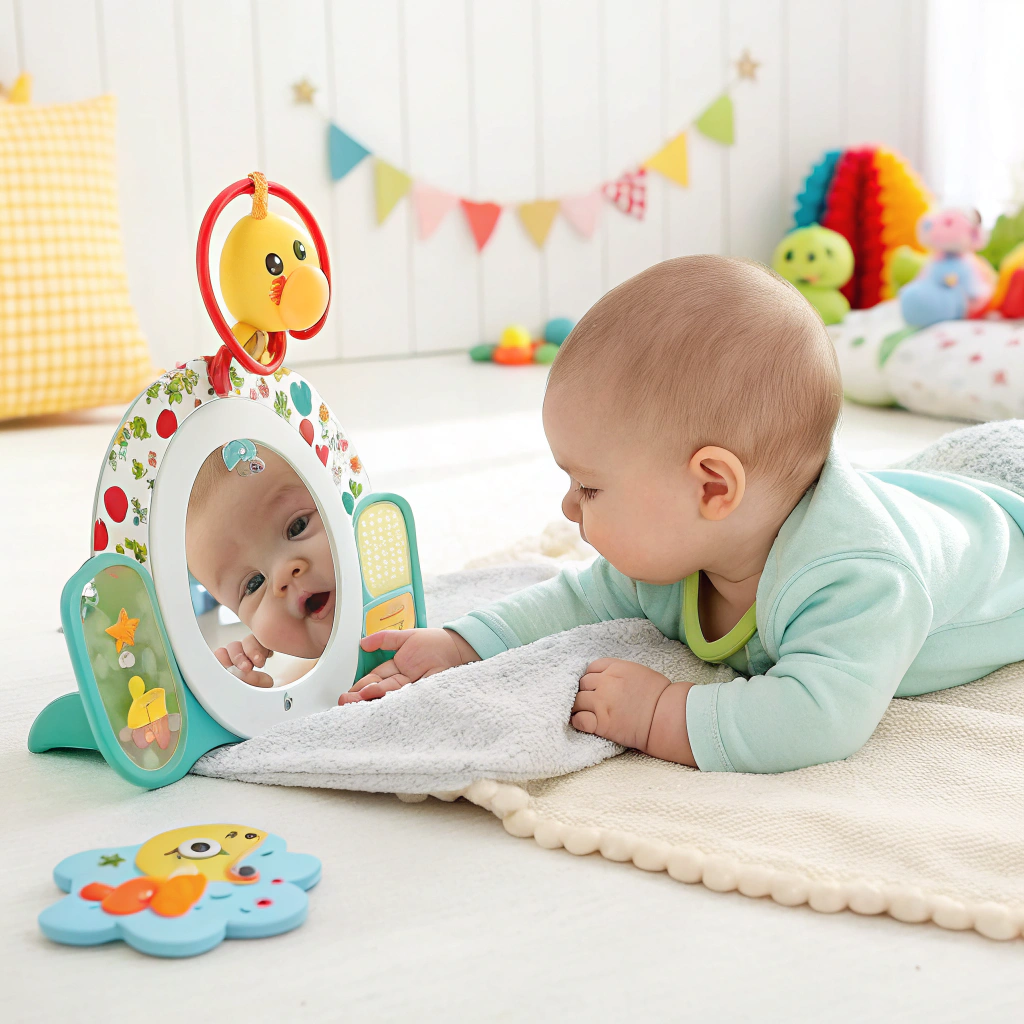
Frequently Asked Questions
How many toys should my 3 month old have?
Even a 3-month-old has a cycle of about 5-7 toys that need to be rotated. At this stage of life, quality matters more than quantity. 1-2 for visual, 1-2 for auditory, and 1-2 for tactile (things to feel, taste, bite, etc) rather than offering them way too many toys to choose from.
Do electronic toys help 3-month-olds?
In general, electronic toys with lights and sounds are probably not going to provide as much developmental value to your 3-month-old as more simple toys. And studies from the American Academy of Pediatrics show that electronic toys may even detract from the quality of language interactions between parents and infants.
How long should a 3-month-old play?
Keep play sessions short (aim for 5-10 minutes, a few times a day). Their minds are distracted quite easily, and the newborn who is at this age can become overwhelmed with too much going on. Stay tuned for signs it’s time to take a pause. This might involve turning away, fussing and yawning.
What are the textures that help the sensory development for 3-month-old babies?
Textured elephant helps develop baby’s tactile senses with different textures to explore,smooth, bumpy,soft, silky,and crinkly. This will help in developing systems in the brain responsible for tactile discrimination and sensory processing.
When is a good time for me to get a play gym/activity mat?
A play gym is a good gift for 3-month-olds to develop visual tracking skills and to encourage little hands to reach out and swipe at objects. Find a play gym that has toys at your baby’s eye sight and up above to encourage long-term play and develop along the way.
How do I choose a toy that’s developmentally appropriate?
Toys which are developmentally appropriate are those which encourage the child’s present capabilities and emerging skills. Toys for 3 month old also help with looking, listening, reaching and basic grasping (usually developmental toys won’t take advanced motor skills).
Are developmental toys worth the money?
Expensive does not mean better! Developmental opportunities are often the same or better with cheap and simple toys. The most important thing is to have the toy engage more than one sense while promoting, whenever possible, co-play (engagement with another person).
How often do I need to rotate my 3-month-old’s toys?
You also need to rotate toys around every week and have only 3-5 toys available for exposure at any one time. By rotating them every week (and only having a few out), it avoids over stimulation and provides the baby with something new to play with. The rotating toys you store, can easily be out of sight when you are not rotating a new batch of toys.
Can I employ everyday things around my house as developmental toys?
Certainly! Household objects like wooden spoons, measuring cups or scarves can serve as great developmental items, provided they are safe and used under supervision. Do you know what is great? Everyday items to supplement sensory experiences, without causing additional expense provide real world sensory opportunities!
What colors are babies able to see bests?
At 3 months, babies best see high-contrast patterns, especially in black and white, as well as bold primary colors, including red. Color vision doesn’t develop until later on, so contrast is more important than color.
Can I safely clean my 3-month-old’s toys?
For cloth toys, simply follow manufacturer instructions for cleaning. For plastic and silicone toys, fill the sink with soapy water and clean with mild soap and water. After cleaning all of your wooden toys — which require nothing more than mild soap and a damp cloth — make sure they’re completely dry too.
My 3-month-old puts everything in his mouth. Is that normal?
Yes, mouthing is one of the ways babies have of exploring and learning about their world. Be sure to verify that all your toys without small parts are also non-toxic and washed regularly. Mouthing is one of baby’s developmental milestones and is also preparing them for their next ever life skill.
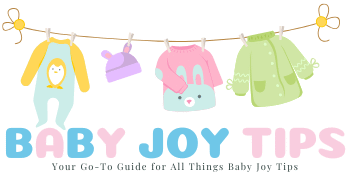
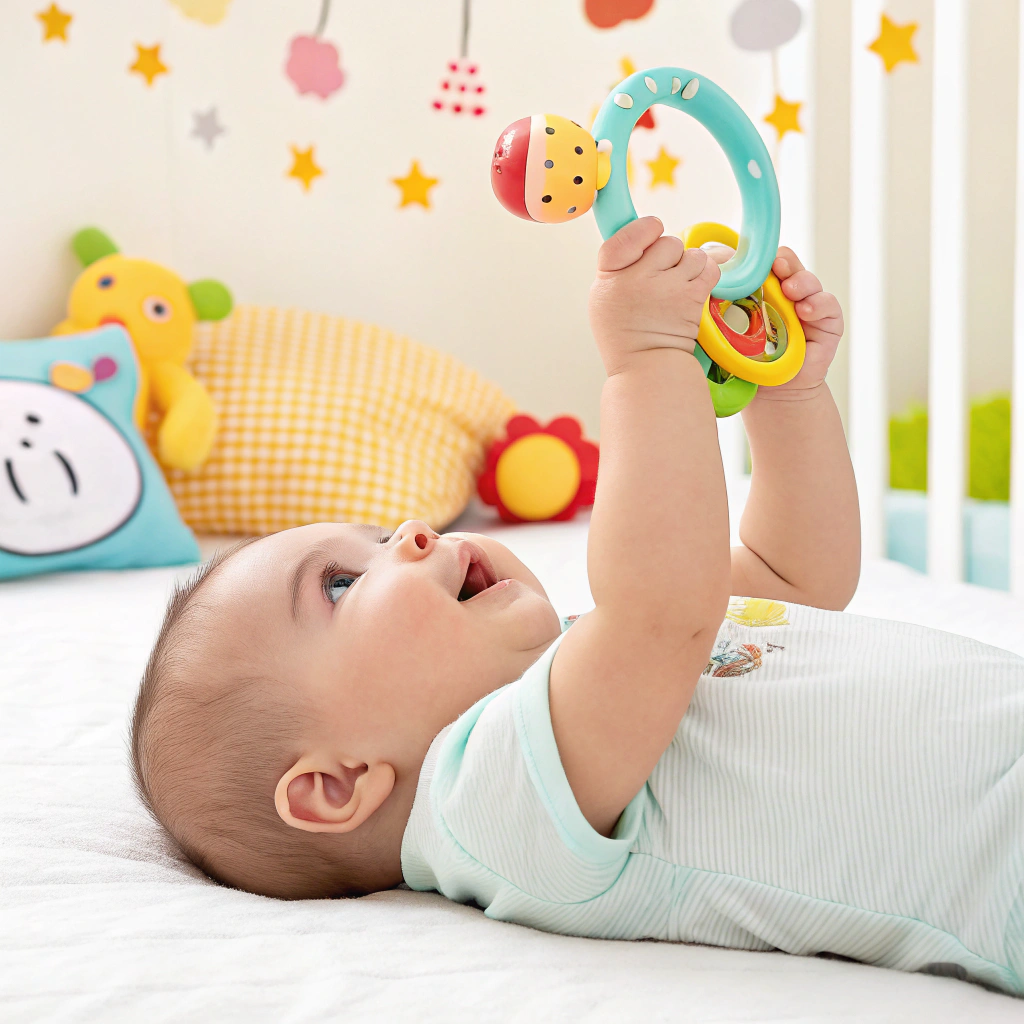

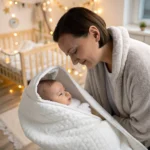
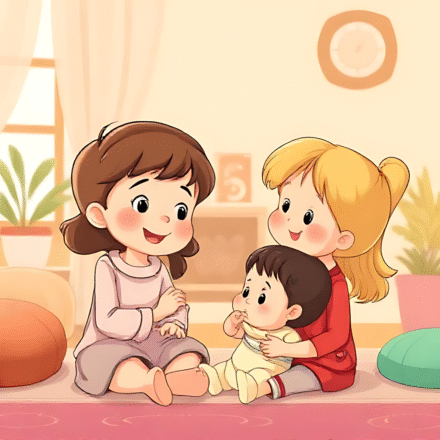
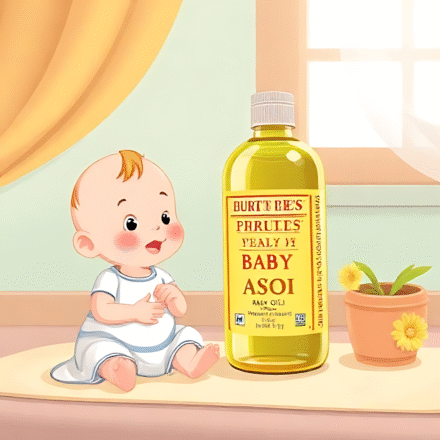
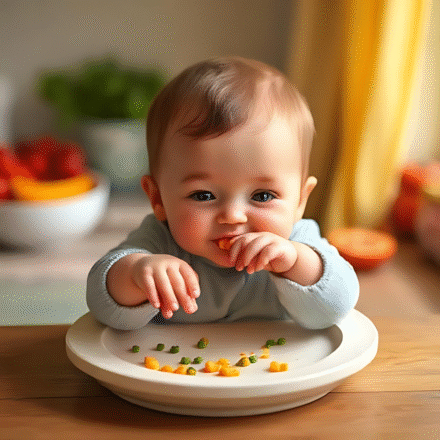
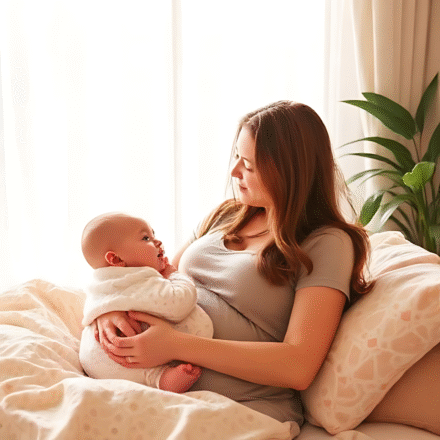
Leave a Comment